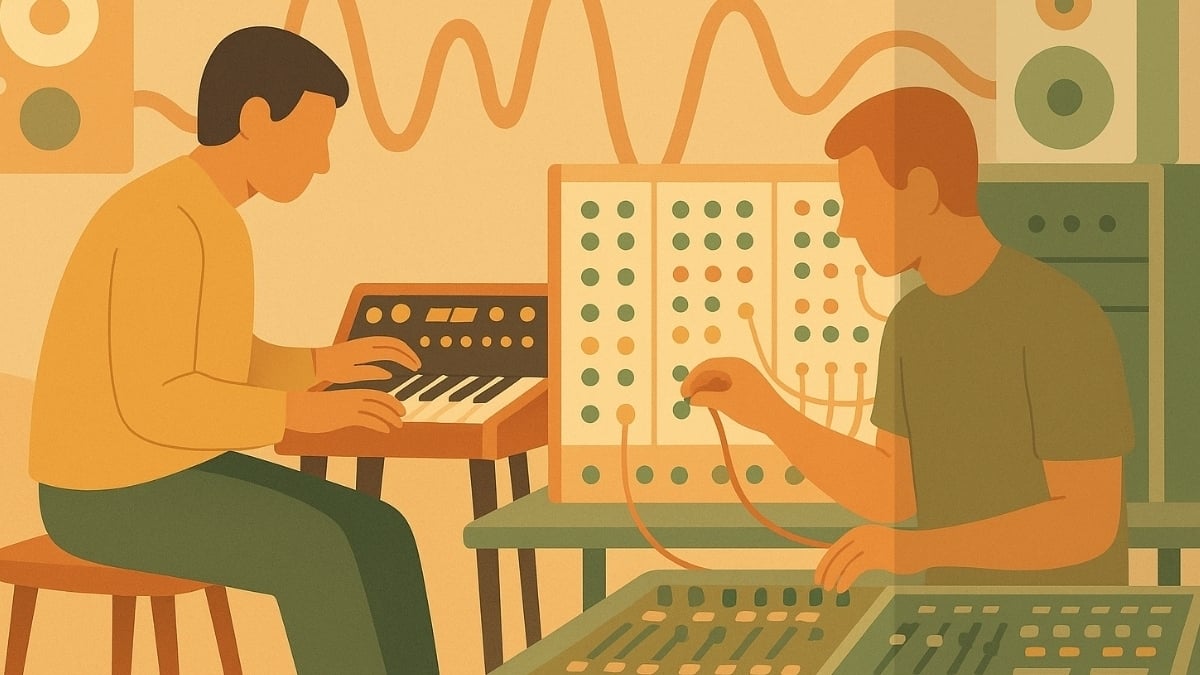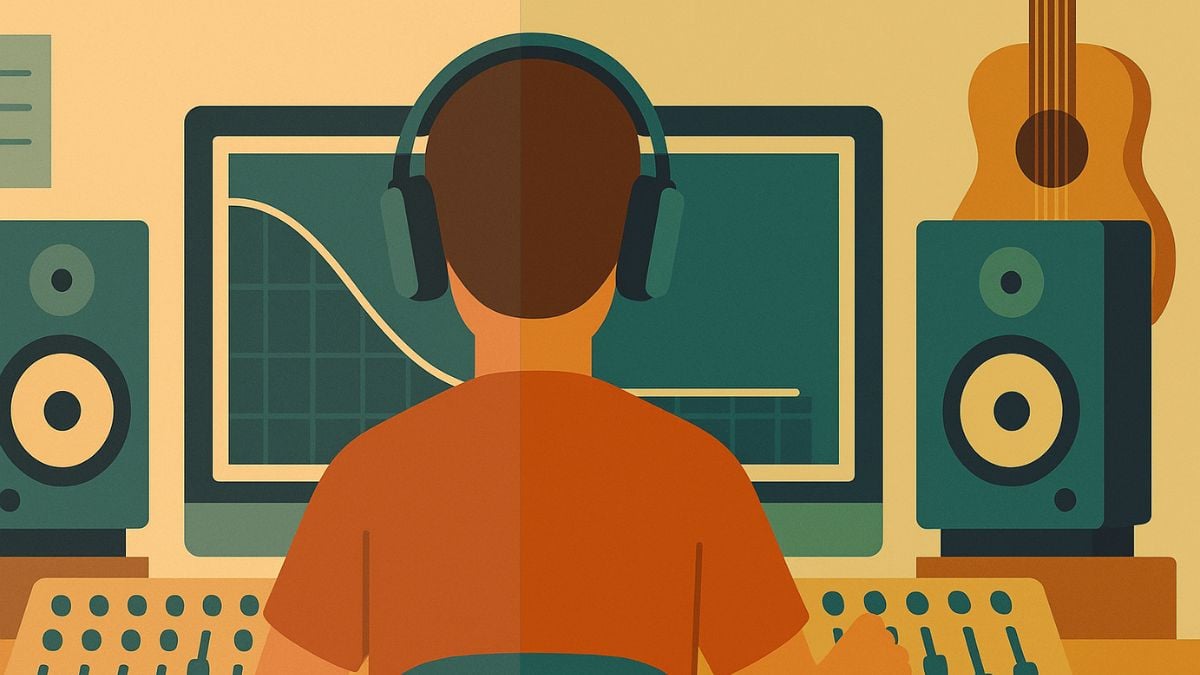How to Make Beats: The Beginner's Guide to Beat Making

Beat-making is probably the path into music production with the lowest barriers to entry. It’s the perfect way to start creating music if you don’t yet have much experience, as you don’t need a lot of equipment or expensive software.
However, plenty of people are making a good living as beatmakers, so there really is no ceiling to how far your beats can take you once you’ve mastered the art!
What is Beat Making?
Beat-making as a discipline really started in the world of hip-hop. Producers would make beats without necessarily knowing who would rap over them. Some producers even created collections of beats that were released as standalone albums; J Dilla’s ‘Donuts’ is probably the classic example of this.
In more recent years, the term beat making has started to encompass music created in other genres, too; EDM, pop and more. A beat is a piece of music that doesn’t rely on any live instrumentation and doesn’t feature original vocals (although it might use vocal samples). That means that in order to make a beat, you don’t need to be able to play an instrument and you don’t need any of the equipment that would be necessary if you were recording live instruments or vocals.
What You Need to Make Beats
Before you start making beats, you’re going to need some equipment and a little bit of knowledge. We’ll get into what you need to know below, but first we’ll guide you through the hardware and software you’ll need to get started.
Beat Making Software
The first thing you’ll need is a computer with a Digital Audio Workstation, or DAW. This is a software platform that will allow you to create a piece of music from scratch. That means it will allows you to record and edit audio, import samples, play virtual instruments, add effects, mix and master your music. There are plenty of DAWs out there and it’s worth spending some time thinking about which is best for you. Ultimately, they all do more or less the same things, but some are a little more suited to beat making than others.
Of all the DAWs out there, Ableton and FL Studio are probably the two that are mostly geared toward beat-making. They both feature specific features that are designed to make beat making workflows quicker and more intuitive.
Both offer reasonably cheap intro pricing but cost significantly more if you want to unlock all of their features. Reaper is worth a mention as one of the cheapest full-featured DAWs out there; it costs only $60. If you have an Apple device, you will already have access to Garage Band, which is quite a limited DAW but is not a bad starting point for new prodcucers as it’s completely free.
Beat Making Hardware
Aside from a computer, the only other piece of hardware you truly need to get started is a pair of headphones. It’s worth investing in a good pair of studio monitor headphones if you can – it will make a huge difference when it comes to mixing your music if you can accurately hear what you are doing.
Commercial headphones like Beats aren’t great for mixing as they color the sound – changing the EQ of the music they play back. Look at offerings from the likes of Beyerdynamic, Audio Technica, and Sennheiser as they all create ranges of accurate studio-focussed headphones. The Sennheiser HD-206 headphones are very cheap and a good place to start for those working on a budget – although if you can afford to spend more, it is definitely worthwhile.
You also might want to consider getting some monitor speakers. This is a big step up for many producers as monitors are expensive. However, for long periods of working it is much more comfortable to work with speakers instead of headphones. If you do invest in monitors, you will also need an audio interface. This is a box that connects your speakers to your computer and it will normally also let you record live input too. While not strictly necessary for beat making, most producers will invest in one sooner or later.
Sample Packs & Beat Making Plugins
Sample packs are collections of royalty free samples that are designed for music production. The fact that they are royalty free means that you can use them in your music and release the results and not have to worry about getting sued! There are lots of places where you can find sample packs online, but the primary resource used by beatmakers today is probably Splice. It’s a site that works on a subscription basis; you pay a monthly fee and can then search their enormous database, downloading a certain number of samples each month.
Another approach to beat making is to use drum rack plugins. Your DAW will probably come with one of these, and there are excellent third party plugins available too – such as Native Instruments’ Battery 4 and ADSR’s Drum Machine. These plugins come with a library of drum samples, often from classic drum machines, that you can program inside your DAW.
How to Make Beats in 7 Steps
If you are completely new to beat making, then follow our step-by-step guide below. We will show you how to create a beat from start to finish. Even if you already have some experience, you might find some really useful pointers below, so read on and learn how to finesse your workflow.
1. Plan Your Beat in Pre-production: Vibe and References
Careful planning can really help us to get closer to our goals. What style of beat do you want to create? Who are the producers or artists that you want to emulate? Listening to ‘reference tracks’ is a great place to start. You don’t want to copy someone else of course, but listen to how producers you admire build their beats.
What musical elements are there in the beat? How are different elements balanced against each other? What kind of rhythm and tempo is used? You might then want to gather a collection of samples together that fit the vibe you want to create – even before you open your DAW. That way you’ll have a palette of sounds to choose from when you begin your creative process.
2. Build your Drum Pattern - Rhythm and Tempo
We mentioned rhythm and tempo above – but what are they? It’s worth getting a good grounding in this subject as it is very important. To explain in brief, however; rhythm is the pattern that is created as we stitch drum hits together, one after the other. A rhythm is characterised not just by where the drum hits land in the bar (or measure), but also by which hits are stronger and which hits are weaker.
Tempo is the speed of the beat and is measured in beats per minute (bpm). Hip Hop is often in the range of 80-100bpm, house music is normally between 120-130bpm and drum & bass generally comes in way up at 170-180 bpm.
You can create a drum pattern by layering individual drum hits together, or you may just find some drum loop samples to form the bedrock of your beat. If you want to program the beat yourself, the best way to learn how to construct a drum pattern is by deconstructing other people’s beats.
That way you’ll really get a handle on how to put them together. BeatRace on SoundGym is an excellent resource for doing just this – it is a game that asks you to recreate a beat as accurately as possible. This is a real shortcut to understanding how drum patterns are put together.
3. Create a Bass Line
With the drums in place, the next step should be to create the bass line. Again, you might find a sample you like, but you can also program the bass using a virtual instrument and MIDI. Your DAW will likely come with some virtual instruments, so experiment with them and see if any of them can generate sounds that excite you – if not, you might need to look into buying some third party plugin instruments to augment those that came with your DAW as standard.
MIDI (Musical Instrument Digital Interface) is a technology that allows us to write melodies into our DAWs. You can input MIDI data with a controller keyboard (this piece of equipment looks like a piano and plugs into your computer via USB) – but you can also draw it in with a mouse.
4. Melody and Chord Progression
Here things can get a little more complicated! Once again, you can try to find some samples that are in the same key as your bass line – melodies and chord progressions that you can layer on top of your bass and drums. Often, chords and melodies will have metadata attached to them that will tell you what key they are in – but use your ears as two samples in the same key might still sound terrible when layered up together!
If you’re struggling to find work samples, why not try creating your own chord pattern using a virtual instrument? Music theory is something that can take a while to learn, but there are some great tools that can help you out along the way. ToneGym has a Progression Generator that allows you to build and play chord progressions – which you can then use in your beats.
5. Experiment with Samples
Even if you’ve programmed your musical parts using MIDI, you’ll probably want to layer some samples into your beat to add interest and colour. Remember that you don’t just have to use samples as you find them – you can chop them up, pitch-shift them, reverse them, mangle them with effects and manipulate them in all kinds of other ways too! Think of your samples as a starting point, not an end point – things get really interesting when you get creative with the ways in which you use them.
6. Mix your Beat
Mixing is a complex subject; you should probably take some time to explore it in more detail. To summarise, this is the process of balancing all of the different elements of your beat against each other, and then presenting them in the best possible light through the use of effects.
You can balance elements using the volume faders, pan controls and with EQ plugins. The goal is to be able to hear each element clearly, and more importantly – for the music to work on a visceral, emotional level. You can do all of this within your DAW.
7. Composition and Variation
You may have now created a stunning - but fairly short - beat. If you want to extend this into something that will keep a listener interested for 3 to 4 minutes, then you will need to think carefully about how you extend it. If you just loop it without varying it, it will quickly get boring. Think of how you can change things up by dropping elements in and out, or by changing the chords, or manipulating samples in a different way. Once again, the best way to get ideas for how to structure your beat is by listening to other people’s music. How are your very favourite beats constructed? What lessons can you take from them?
Making music isn’t easy and your first few beats probably won’t be great – but that doesn’t mean that you can’t have fun making them! Enjoy yourself, and remember that the only way you will improve is by practising. The more beats you make, the faster your skills will improve. The only thing that will really hold you back is being afraid to start – so jump in, start creating, and see what happens!



Comments:
May 15, 2023
May 13, 2023
May 12, 2023
Login to comment on this post